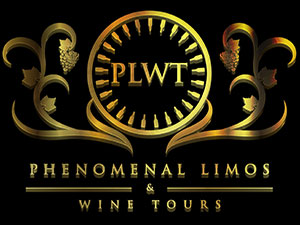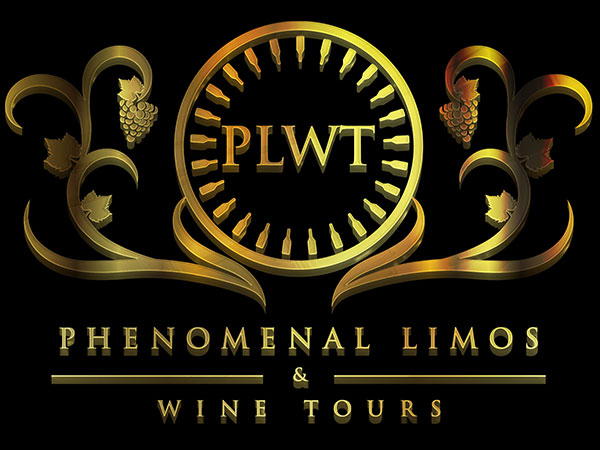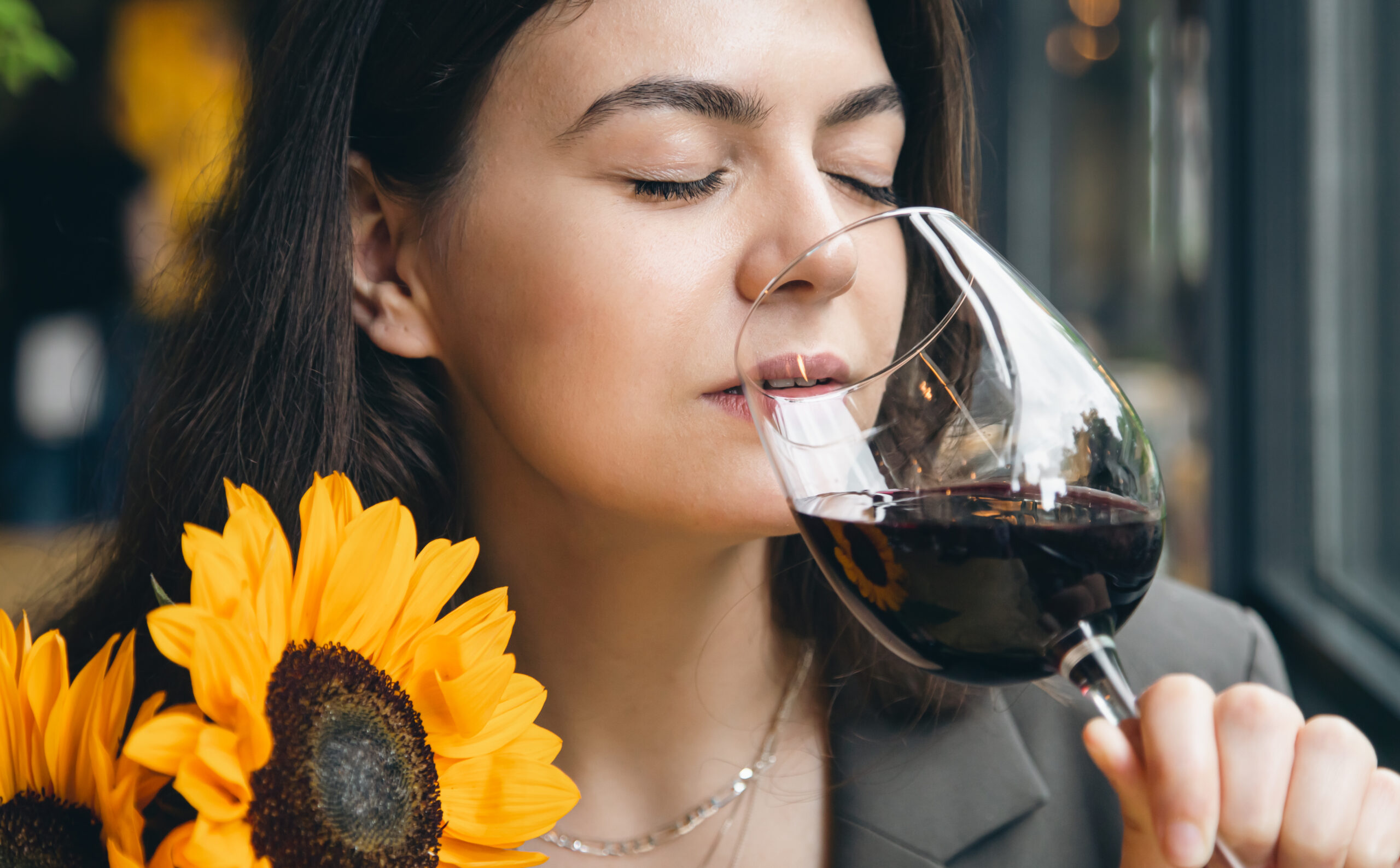
The Allure and Mystery of Wine Tasting
For centuries, wine has enticed enthusiasts with its captivating flavors and rich history. The act of wine tasting – the careful examination of these qualities – has become a cherished ritual for connoisseurs around the world. It is a sensory journey, promising a unique experience with every sip.
The Paradox of Difficulty
Surprisingly, despite its undeniable charm, wine tasting can be a surprisingly perplexing endeavor, even for seasoned wine drinkers. Unlike other sensory experiences focused on a single sense (sight, smell, taste), wine appreciation involves a complex interplay between taste and aroma. This unique combination creates a multifaceted flavor profile that can be challenging to decipher, even for the most enthusiastic palate.
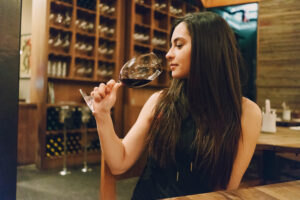
The Sensory Overload of Wine Tasting
Taste vs. Aroma: The Intertwined Senses
Our perception of flavor in wine is a fascinating dance between two distinct sensory experiences: taste and aroma. Taste buds on the tongue can only detect five basic flavors – sweet, sour, salty, bitter, and umami (savory). However, the true symphony of flavor in wine unfolds through aroma. Hundreds of volatile compounds, released during fermentation and aging, travel up the retronasal passage (the back of the nasal cavity) when we sip, stimulating olfactory receptors and creating a vast array of perceived aromas.
Imagine a complex musical chord. The basic tastes on the tongue provide the fundamental notes (sweetness, acidity), while the myriad aromas paint the melody – fruity, floral, spicy, earthy, and so on. These elements weave together to create a unified flavor profile that is far greater than the sum of its parts. For beginners, differentiating between taste and aroma can be a significant hurdle. The initial sweetness or sourness on the tongue might overshadow the subtle nuances of a floral aroma or the subtle grip of tannins detected through a combination of taste and mouthfeel.
The Fleeting Nature of Taste
Unlike a photograph capturing a single moment, the flavor profile of a wine is a dynamic experience that unfolds over time. The interplay between various components in the wine – acidity, tannins, alcohol, and residual sugar – creates a constantly evolving journey for the palate. Acidity might hit the tongue first, providing a zingy freshness, followed by the sweetness of fruit flavors. Tannins, typically found in red wines, can reveal themselves gradually, starting with a slight astringency on the gums that can morph into a smooth, velvety texture as the wine breathes.
Capturing and describing this ever-changing flavor profile adds another layer of complexity to wine tasting. The initial burst of flavor may be dominated by bright fruit notes, but as the wine lingers on the palate, hints of earth, spice, or even oak might emerge. This fleeting nature makes it challenging to fully grasp and articulate the complete flavor story of a wine in a single sip. Experienced tasters learn to take deliberate sips, allowing the wine to coat their tongue and breathe, revealing the intricate layers of flavor hidden beneath the surface.

The Challenge of Describing Flavors
The Limitations of Language and the Dance of Metaphors
Imagine trying to paint a breathtaking sunset with only a handful of primary colors. This is the fundamental challenge of describing the intricate flavor profiles of wine. While our taste buds can detect a vast array of subtleties, human language often struggles to keep pace. Unlike the precise vocabulary of a chemist or a musician, the lexicon of wine tasting can feel frustratingly imprecise. There’s no universally accepted dictionary for translating these complex sensory experiences into words.
To bridge this gap, we rely heavily on metaphors and comparisons. We describe wines as “fruity,” but what kind of fruit? Is it the juicy burst of blackberry or the delicate perfume of white peach? “Earthy” might evoke a damp forest floor for one person, while another might imagine the rich, earthy character of a freshly turned mushroom patch. These metaphors become a sort of shared language, a starting point for conveying the essence of a flavor. However, the risk lies in misinterpretation. What one person interprets as “blackberry” another might perceive as “plum,” highlighting the limitations of relying solely on comparisons.
The Symphony of Individuality: Genetics, Experience, and Personal Bias
Adding another layer of complexity, our ability to taste wine is not a universal experience. Just like some people have perfect pitch and can readily distinguish musical notes, others have a heightened sensitivity to certain taste receptors. Genetics play a role, influencing how efficiently our taste buds detect basic tastes and respond to specific flavor compounds.
Furthermore, our past experiences significantly shape our perception of flavor. Exposure to different cuisines, beverages, and even childhood memories can create a personal flavor library that influences how we interpret what we taste. Someone who grew up enjoying blueberry muffins might readily identify blueberry notes in a wine, while another person with no such reference point might struggle to grasp the same flavor.
Finally, personal preference and bias can unconsciously color our descriptions. If we expect a certain flavor profile based on a wine’s grape varietal or region, we might be more likely to “taste” those characteristics, even if they are not particularly prominent. Learning to recognize these biases and approaching each wine with an open mind is crucial for developing an accurate and objective understanding of its flavor profile.
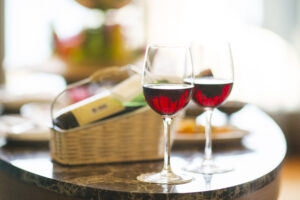
The Influence of Context and Expectation
The Allure and Peril of Prior Knowledge: How Information Shapes Perception
The information we possess about a wine before tasting can have a surprising influence on our perception of its flavor profile. Knowing the grape varietal (Cabernet Sauvignon, Pinot Noir), the region (Bordeaux, Burgundy), or even the price point can subtly nudge our expectations in a particular direction. This phenomenon, known as confirmation bias, can lead us to unconsciously “taste” flavors that align with our existing knowledge, even if they are not particularly prominent in the wine itself. For instance, someone familiar with the characteristic black currant notes of Cabernet Sauvignon might be more likely to perceive those flavors, even if the specific wine leans more towards cedar or bell pepper.
Blind tastings, where the wine’s identity is concealed, are a powerful tool for overcoming these biases and focusing solely on the sensory experience offered by the wine itself. Without preconceived notions about grape varietal or price, the taster is forced to rely solely on their senses to decipher the wine’s flavor profile. This allows for a more objective and unbiased evaluation, highlighting the inherent qualities of the wine itself.
Setting the Stage for Sensory Exploration: How Ambiance Impacts the Experience
The environment in which we taste wine plays a significant role in shaping our perception. Just as lighting can dramatically alter the appearance of a painting, the ambiance of a tasting room can subtly influence how we experience the wine. For instance, harsh fluorescent lighting might cast an unflattering hue on the wine, while natural light or warm incandescent bulbs can create a more inviting atmosphere. Similarly, the temperature of the room can affect our taste perception. Chilled wines tend to feel crisper and more acidic, while warmer temperatures can emphasize the alcohol content and sweetness.
The company we keep during a tasting can also influence the experience. A relaxed and focused environment, free from distractions, allows our senses to fully engage with the wine. Engaging conversation about the wine’s characteristics can further enhance the experience, prompting us to consider different aspects of the flavor profile. Conversely, a noisy or crowded environment can make it difficult to concentrate on the subtle nuances of the wine, hindering our ability to appreciate its full potential.
The Development of Expertise in Wine Tasting
Sharpening Your Sensory Tool: The Art of Palate Training
Just like any skill, expertise in wine tasting requires dedicated practice. The concept of “palate training” revolves around repeated exposure to a wide range of wines, gradually honing your ability to identify and distinguish subtle flavor nuances. Imagine a musician training their ear to recognize different musical intervals. Similarly, with each new wine you taste, your palate becomes more attuned to the intricacies of flavor profiles.
The key lies in variety. Tasting wines from different grape varietals (Cabernet Sauvignon, Chardonnay, Pinot Noir, etc.) allows you to experience the unique flavor expressions of each grape. Exploring wines from diverse regions (Bordeaux, Napa Valley, Barolo) further expands your palate’s repertoire. Each region imparts its own signature characteristics on the wines it produces, influenced by factors like climate, soil composition, and winemaking traditions. For example, Cabernet Sauvignon from Bordeaux might be known for its bold structure and black currant notes, while the same grape grown in Napa Valley might exhibit riper fruit characteristics and softer tannins. By experiencing these variations, your palate learns to differentiate between regional styles and grape-specific qualities.
Decoding the Language of Wine: A Roadmap to Flavor
Developing a strong understanding of the vocabulary used in wine tasting is another crucial step on the path to expertise. This specialized language acts as a roadmap, helping you translate sensory experiences into recognizable flavor profiles. Learning about the characteristic flavor profiles of different grape varietals is a valuable starting point. For instance, Sauvignon Blanc wines are often described as having notes of citrus, grapefruit, and grass, while Syrah might evoke aromas of black pepper, plum, and smoke.
Beyond grape varietals, understanding winemaking techniques like oak aging or malolactic fermentation can further refine your ability to interpret flavors. Oak aging can impart notes of vanilla, toast, and spice, while malolactic fermentation can soften a wine’s acidity and contribute a buttery or creamy character. Finally, the concept of regional typicity becomes a powerful tool. By familiarizing yourself with the typical flavor profiles of specific regions, you can start to identify these characteristics in blind tastings, adding another layer of sophistication to your wine appreciation.
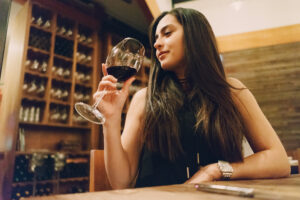
Embracing the Subjectivity of Wine Tasting
There’s No Such Thing as a Bad Taste
One of the most liberating aspects of wine tasting is the absence of a single “correct” answer. Unlike a math equation with a definitive solution, the beauty of wine appreciation lies in its inherent subjectivity. There’s no right or wrong way to taste wine; what matters most is your personal experience and enjoyment. While seasoned tasters might identify specific flavor components or regional characteristics, the ultimate question is: Do you like this wine?
Focus on what resonates with your palate. Does the wine have a pleasant balance of sweetness and acidity? Do the flavors complement each other harmoniously? Does the overall experience leave you feeling satisfied and wanting more? These are the questions that truly matter in the realm of personal wine enjoyment.
The Joy of the Journey: Unveiling Your Personal Taste Profile
Instead of viewing the challenge of wine tasting as an obstacle, consider it an exciting opportunity for exploration and self-discovery. Every tasting experience, whether positive or negative, adds another piece to the puzzle, helping you refine your personal taste profile. Did you discover a newfound appreciation for the bold tannins of Cabernet Sauvignon? Perhaps you have a preference for the bright acidity and citrus notes of Sauvignon Blanc. As you explore a wider variety of wines, your palate gradually evolves, revealing your unique flavor preferences.
Ultimately, the true reward of wine tasting lies in the joy of the journey. Embrace the learning process, experiment with different styles, and most importantly, have fun! There’s a whole world of flavors waiting to be discovered, and the best way to navigate it is with an open mind and a sense of adventure.
Conclusion
Wine tasting’s allure lies in its complexity, but this very quality can also make it a surprisingly challenging endeavor. The interplay of taste and aroma creates a multifaceted flavor profile, while the fleeting nature of taste sensations adds another layer of difficulty. Furthermore, language limitations and individual differences in perception can make describing and interpreting flavors a complex task.
However, the path to appreciating wine is not about achieving mastery or attaining a single “correct” answer. Through dedicated practice (palate training) and an understanding of wine terminology, you can develop the skills to navigate these complexities. Being mindful of the tasting environment and remaining aware of potential biases are also crucial for objective evaluation.
Ultimately, the key to unlocking the enjoyment of wine tasting lies in embracing its subjective nature. Focus on what you like and dislike, using each tasting experience as an opportunity to discover your personal preferences. Approach wine tasting with an open mind and a spirit of exploration, and you’ll be well on your way to appreciating the vast and fascinating world of flavors it offers.
